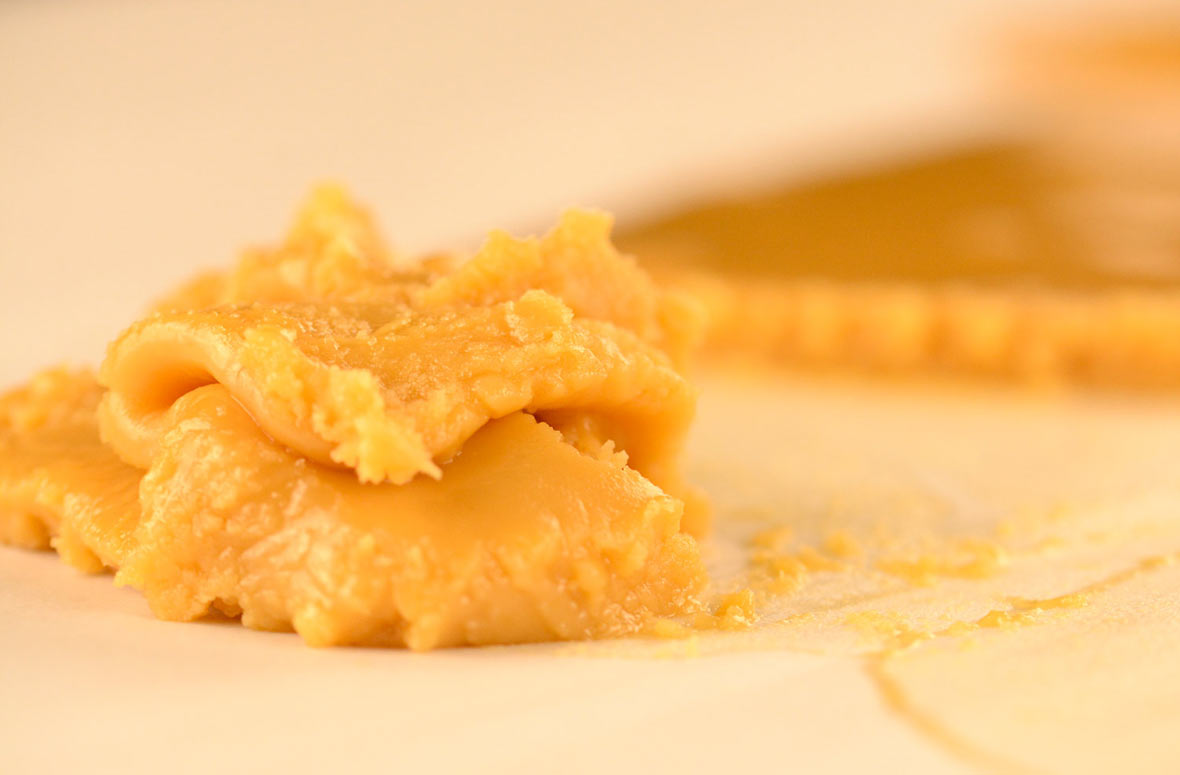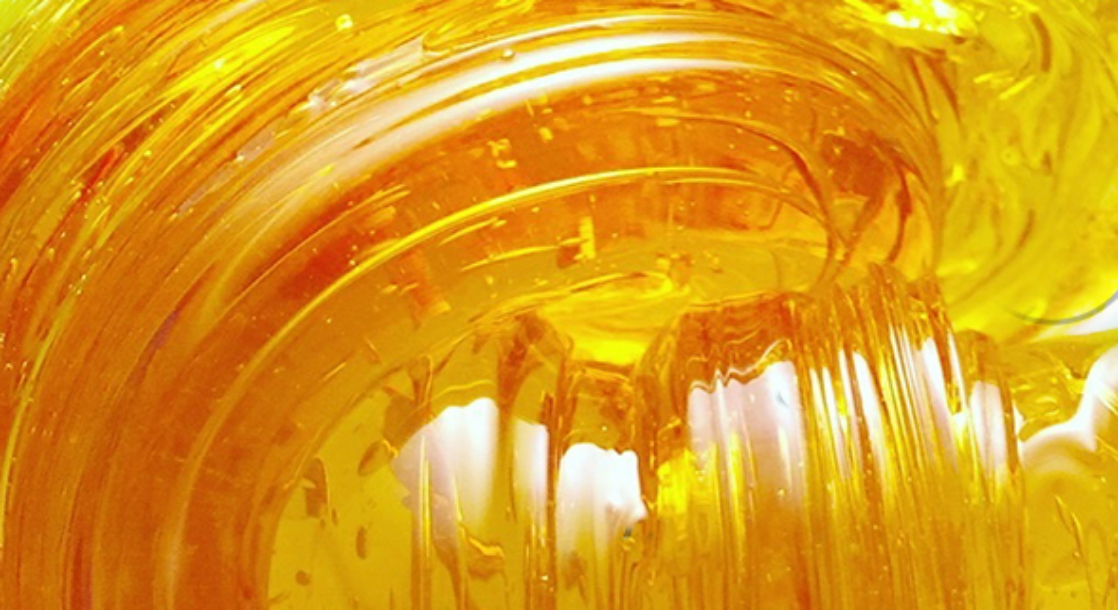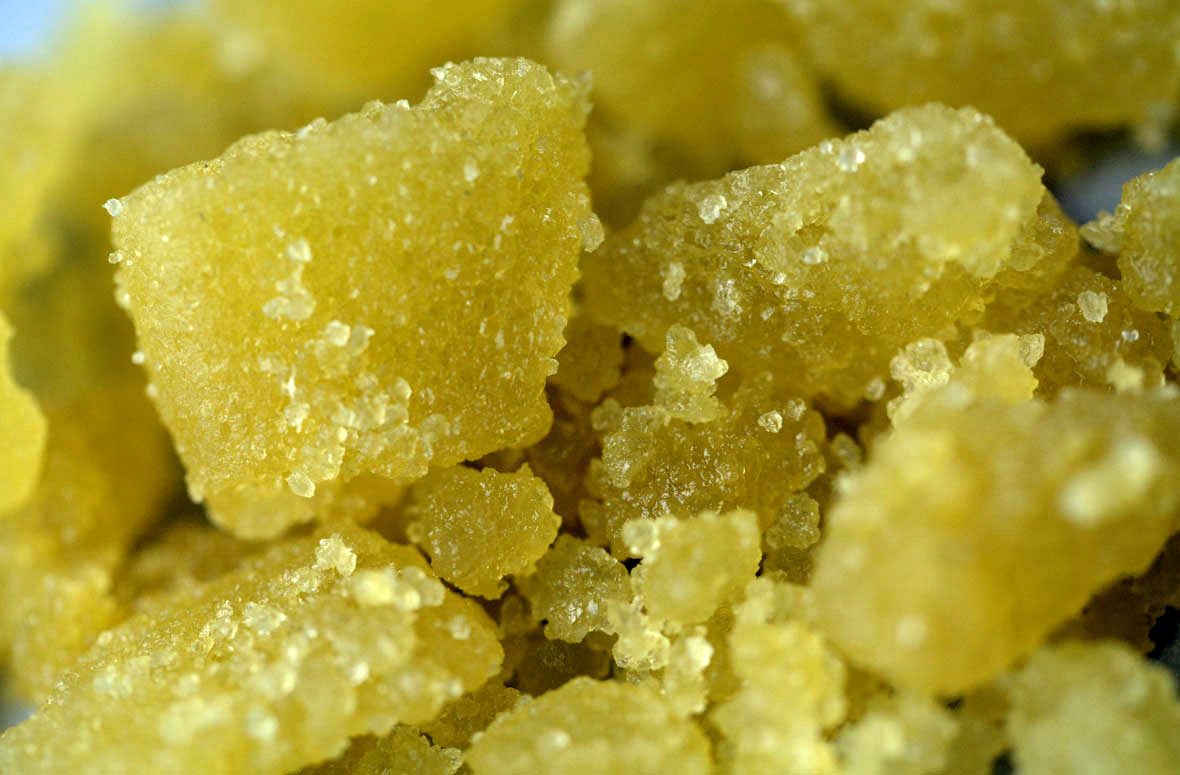Why BHO Dabs Are Both Delicious and Safe, According to Award-Winning Scientists
#KahliBuds #MMJ #CBD #THC
Marijuana concentrates made from butane (BHO) or propane (PHO), also known as hydrocarbon extracts, are some of the most flavorful and fragrant cannabis products in existence. They come in an assortment of styles, too, including wax or “budder,” shatter, honey oil, and “sugar.” But perhaps the creme de la creme of hydrocarbon extracts are “sauces,” which are basically pure THCA crystals slathered in a soup of aromatic terpenes.
How are these extracts made? How can consumers new to the dabbing scene distinguish top-shelf butane concentrates from the so-so stuff? And will we see newer, more specialized hydrocarbon extracts in the near future?
To find out, MERRY JANE spoke with two of the founders at Harmony Extracts, Jeremy Johnson and Calen Harmon. In business for only four years, Harmony is a Colorado-based hydrocarbon extraction company with over 50 coveted awards under its belt, including the High Times Cannabis Cup (multiple times), the Spannabis Cup in Barcelona, and the Rooster Cup.
“With butane and propane, they’re probably the most versatile way to extract [from cannabis],” Johnson said over the phone. “We can create so many different products off of a butane extract that you can’t get with a solventless or carbon dioxide or ethanol-based extract.”
But first, a little background on these two extraction scientists. Johnson got his start blasting weed with butane into Pyrex dishes back in 2005, Colorado’s “Wild West” medical marijuana days. He’s worked at four commercial labs since 2011, including Boulder MMC and Mahatma Concentrates, the latter of which he operated for three years.
To complement Johnson’s intimate knowledge of cannabis as a living, breathing entity, Calen Harmon brings his industrial chemistry expertise to Harmony Extracts. As the Director of Research and Development at the company, Harmon understands the ins-and-outs of chemical extraction. With their minds combined, they’ve not only established new ways of maximizing novel weed oil separations, they’ve also made sure that their products and manufacturing processes remain as safe as possible.
This interview has been edited for clarity and length.

Courtesy of Harmony Extracts
MERRY JANE: Both of you worked in the cannabis space for years before founding Harmony Extracts. Why did you decide to form your own company?
Jeremy Johnson: If you go into a grocery store or a gas station and you buy a Coca-Cola, it always tastes like Coca-Cola, every time. So, we took that approach to our concentrates. At Harmony, everything we make is grown from our in-house materials. Literally, 100 percent of [the plants used to make our] live resin is all grown by us. We don’t do any third-party processing with the Harmony brand, and that guarantees the consistency of our product. If you try our Lemon G product today, you’re going to get the same Lemon G product a year from now.
Are all of Harmony’s products made from live resin?
Johnson: No. It depends on the source material. That kind of leads me to a question for you that I like to ask everyone, and it’s kind of crazy how many people can’t answer this: What is live resin?
It’s an extract made from weed that’s never been dried or cured. The plant gets cut down, and you either freeze it right away, or you do the extraction right then and there.
Johnson: That’s kind of part of the process. You cut down the plant, and you freeze it immediately. You can wait a day. You can wait a month. Then you process it.
And that’s what 99 percent of people don’t understand. The reason it’s called “live resin” is because the terpene profile of the plant, on the day you harvest it, is completely different than when you cut down a plant and hang-dry it. A lot of people don’t realize this, but about 70 to 80 percent of the terpenes that a cannabis plant produces during its life cycle is lost within the first week of hang-drying and curing it. So, when we take the plant and immediately freeze it, we’re freezing in the terpene profile as it was on the day of the harvest. That terpene profile [of a live resin extract] is exactly how it was on the day that you harvested it; it’s a “live profile,” if you will.
Harmon: To expand on this just a little bit, we’ve got to remember that terpenes are really volatile. They’re evaporating into the atmosphere as they’re sitting there. During the drying process, all of these terpenes evaporate at a different rate according to a boiling point. So, lighter terpenes are going to evaporate first and faster than heavier terpenes. Not only is the flavor and the smell going to reduce over the curing process, it’s going to [have a different terpene profile], too. That’s why your cured nugs smell a whole lot different than any living plant. Our goal is to bring that living plant smell and flavor into something that’s more easily preserved over time, like an extract in an air-tight jar.
For the readers who are unfamiliar with how hydrocarbon extracts are made, can you walk us through your process from the beginning to the end, and how your processes preserve the plant’s original terpene profile?
Johnson: Absolutely. We’re not using your typical butane or propane. Everything that we’re using is odorless. It’s 99.5 percent pure. We create the [solvent] blends for our extracts in-house, just to maintain quality control. But this isn’t your typical barbecue propane. This is instrument-grade.
What’s the advantage of using purer butane and propane over, say, the stuff you can pick up in a can at Walmart?
Harmon: That stuff is going to have mercaptans in it, which is what gives it the [gas] smell. If we extracted with those [less-pure] solvents, that flavor and smell is going to be left in the end product. There is also a mixture of gases in those solvents; there’s N-butane, there’s isobutane, there’s propane in there among other impurities. So, with the gas that we use now, we’re minimizing those purities, and we know exactly what we’re using to extract.
Johnson: We mix the butane gas with propane, depending on what kind of end process we’re going for, whether it’s wax or shatter or sugar or something of that nature. Then, we’re taking the plant materials, and it all goes into a closed-loop hydrocarbon extraction machine. So, these vessels are all jacked in so we can control the temperature of the plant materials, and we can control the temperature of the solvent we’re using, which gives us full control over the entire process. With the closed-loop system, we’re also recovering all of those solvents [at the end] and reusing them.
From there, we’ll run it through the machine, and we’ll collect [the end products]. And depending on the product we’re making, that’s when we decide if we’re making a wax, a shatter, a sugar — it’s the post-processing that sets them all apart.

Courtesy of Harmony Extracts
You’ve been at the hydrocarbon extract game for nearly 15 years. How have these manufacturing processes evolved since you got started in 2005?
Johnson: [chuckles] It’s a night and day difference. When we started, we were taking stainless steel tubes and packing them full of weed, then grabbing a can of butane and blasting it into a Pyrex dish. It’s a boiling liquid at that point. Then, you stand over some sort of heat source, and you evaporate that into the environment. Obviously, that’s inherently dangerous, and it was very rudimentary.
When we started, everything that we made was wax. There was no specialized equipment for anything that we were doing. And as everything progressed, we went from wax and got into shatter consistency. That was really hot for a long time, then we progressed from there and we got into making diamonds and sauce. It was the first separation where we could separate the THCA from all of the other cannabinoids.
Now, we have a product we can make called ice nectar. We can completely pull apart the extract. We can isolate the terpenes with no cannabinoid content to them. There are no fats, no lipids. We’re isolating the THC by itself. We’re taking 99.99 percent pure THCA and mixing it back in with pure terpenes. We’re basically making a designer hash. We can take out terpenes that we don’t like, and we can spike terpenes in that we do like a little more into there and manipulate the flavors that way.
THCA diamonds are as pure of an extract as anyone can get. In your opinion, have we reached the end of the extraction game? Or do you foresee a new type of extraction product, a new phase coming up soon?
Johnson: I understand your question — now that we’re able to dismantle the extract or the plant material, and there are probably only one or two more steps we can go to further refine it from there — but as far as product development and efficiencies and things like that, we’re just scratching the surface.
We’re still in the infancy stages of being a legal industry. As everything grows, and more money gets involved, and more equipment manufacturers come online, there are going to be things we can’t create today. There just purely isn’t the equipment out there; it hasn’t even been made yet. As advances in equipment happen, you’re absolutely going to see new products coming.

Courtesy of Harmony Extracts
Some consumers have concerns about butane or propane residues getting stuck in the extracts. Are those concerns legit, or is it based on misunderstanding the manufacturing process?
Harmon: Are you concerned when you spark up a bowl with your lighter? If we’re going to take exposure to solvent into account, we have to look elsewhere. Butane is used as a propellant in all sorts of consumer products: hairsprays, deodorants, lighters, barbeque grills. Along with isobutane, [hydrocarbons] are really popular propellants because they’re very non-reactive. They belong to a chemical class called alkanes, which really don’t have the “chemical handles” to react with other substances.
Johnson: I think [hydrocarbon extracts] get a lot of negative publicity because when people think of butane or propane, they’re only used to seeing it used as fuel. I can understand the misconception, and I think that’s the draw for people toward a solventless extraction or a carbon dioxide extraction. But where we’re at now, we’re using an extremely pure solvent. This isn’t barbecue grill propane; this isn’t the butane in your lighter. And when we do our post-processing, the state mandates [hydrocarbon residues] to be below 1,000 parts per million [ppm].
Most of the stuff we make comes well below the level of quantification (LOQ), so as far as people’s fear of butane and propane being harmful to their health, there’s very, very minute, trace amounts left in there. There have been no studies conducted that found it would have adverse health effects.
That’s hella reassuring. On that note, what are the advantages to using hydrocarbon extractions over other methods of making hash or concentrates?
Harmon: The reason why [we went with hydrocarbons] is that in any extraction, you have to target the compounds you want to include in your extract. We’re wanting THCA, THC, flavor components which are mainly terpenes, and we want to leave behind impurities like chlorophyll, waxes, and other things. So, we have to really tailor our process not just with the solvents, but also in our other methods of control like temperature and exposure time.
Johnson: The reason we go with hydrocarbons over carbon dioxide or ethanol is because the quality of product that’s going to come out of it. We’ve all seen the cannabis competitions for years, and there’s a reason why carbon dioxide and ethanol extractions never even place, and why solventless [products] have their own category. If you put any of those three into the same category as hydrocarbon extracts, they’re not going to be able to compete.
We’ve spent a lot of time and energy and resources on testing to ensure that we’re doing a one-to-one terpene profile of the plant when we’re extracting it. The only method that we’ve found that gives a direct one-to-one representation of the [plant’s terpene profile] as it was when it was alive is hydrocarbon extraction.
For instance, a typical carbon dioxide concentrate tests between 3 to 7 percent terpene content. When you get into doing live resin extractions, 3 to 7 percent is really mediocre. I’ve seen live-resin extractions come back as high as 30 percent terpene content. In my opinion, from trying the products, terpene profiles change when extracting with carbon dioxide.
As far as solventless goes, you can make some really good hash. You recently wrote a piece with Nikka T — that guy has completely changed the solventless game forever. But given that, you’re still not able to capture those [live] terpene profiles like you can with hydrocarbons.
Harmon: As far as ethanol is concerned, ethanol can extract terpenes really well, but its boiling point is so close to the lower-boiling-point terpenes that it’s going to drag those terpenes along when you’re recovering the solvent. You’re going to end up with an extract where the flavor is changed just because of this [ethanol] process boiling the flavorful molecules off.
Johnson: Personally, when I talk to people about how I shop for any product — whether it’s flower or concentrate — I don’t typically look at [brand names], and the thing I definitely don’t do is look at THC percentages. And the other thing I don’t do is ask for a “sativa” or an “indica.”
What I’ll do is go in and open every container and smell every single one of them until I’m, like, “You know what? The nose on that one is proper. That’s what I’m looking for.” Your body knows what it needs — your nose knows. If you smell something, and it smells amazing, there’s probably something in there that your body needs. Find that nose on the product, and shop on top of that. If you know you like a gas-like product, go search for that. If you like a fruity flavor, go search for that.
Once you find that flavor profile you’re looking for, then you can start breaking down the effects. “This one makes me want to mow my lawn,” or “This one makes me want to take a nap.”

Courtesy of Harmony Extracts
Can you explain why THC percentages aren’t a huge factor for you when selecting weed products?
When I ask budtenders what are the top two questions they’re asked by customers, it’s always the same: “What are your sativas or indicas?” And “What’s the highest testing one [for THC]?”
I think that’s the way the states directed it based off of testing for THC only. It makes people have this view [of cannabis products] like alcohol. If you buy beer at 5 percent alcohol, you know the effects of it. If you buy Everclear at 100 proof, you have an idea of how it will affect you. But it’s not so that cut-and-dry when it comes to cannabis.
If you’ve ever smoked distillate — no matter whose distillate — it’s always a really intense head high. It onsets fairly quickly, and it dissipates within 45 minutes to an hour. But, if you take that same distillate, and you add cannabis terpenes back into it, and you take a hit, you can literally feel the euphoria come over your body. It’ll make you want to get up and do something, or it’ll make you want to take a nap, or it’ll help with appetite suppression. Terpenes are really the driving factor behind the THC [effect].

Courtesy of Harmony Extracts
For new customers and dabbing veterans alike, what’s the best way to store extracts so their terpenes are preserved?
Johnson: In the refrigerator, not in the freezer.
Harmon: A wine cooler is also appropriate. Consider temperature and air in the container that can displace the terpenes. Overall volume is important, too. [Editor’s note: In other words, you want the smallest possible container for storing your extract to minimize air space.] For concentrates, you’ll want to keep them in the jar they came in, since you can lose a lot of terpenes [if you transfer them to another container].
Johnson: Here’s a way to test this: If you take the product, and you stick it in the fridge overnight, come back in the morning, and pull it out. Immediately smell the extract or the flower. When you smell it, there won’t be a lot of aroma coming off of it. Now, let it sit out at room temperature for 10 to 15 minutes, then come back and smell the exact same jar, and you’ll be blown away by the difference. [Cool temperatures] really locks [the terpenes] in there.
Any last thoughts to leave with our readers?
Johnson: With butane and propane, they’re probably the most versatile way to extract [from cannabis]. We can create so many different products off of a butane extract that you can’t get with a solventless or carbon dioxide or ethanol-based extract. Those are formulated specifically for what you’re extracting for. But with hydrocarbons, I can make honey oil, I can make wax, live resin, shatter, or sauce. I can do terpene isolation or cannabinoid isolation. The variety of products that open up because of hydrocarbon extraction is night and day compared to the other methods out there.
Follow Harmony Extracts on Twitter, Instagram, and Facebook. You can also check out the company’s website here
Follow Randy Robinson on Twitter, Instagram, and Facebook
420GrowLife
via www.KahliBuds.com
Randy Robinson, KahliBuds, 420GrowLife
- Share:

0 comments